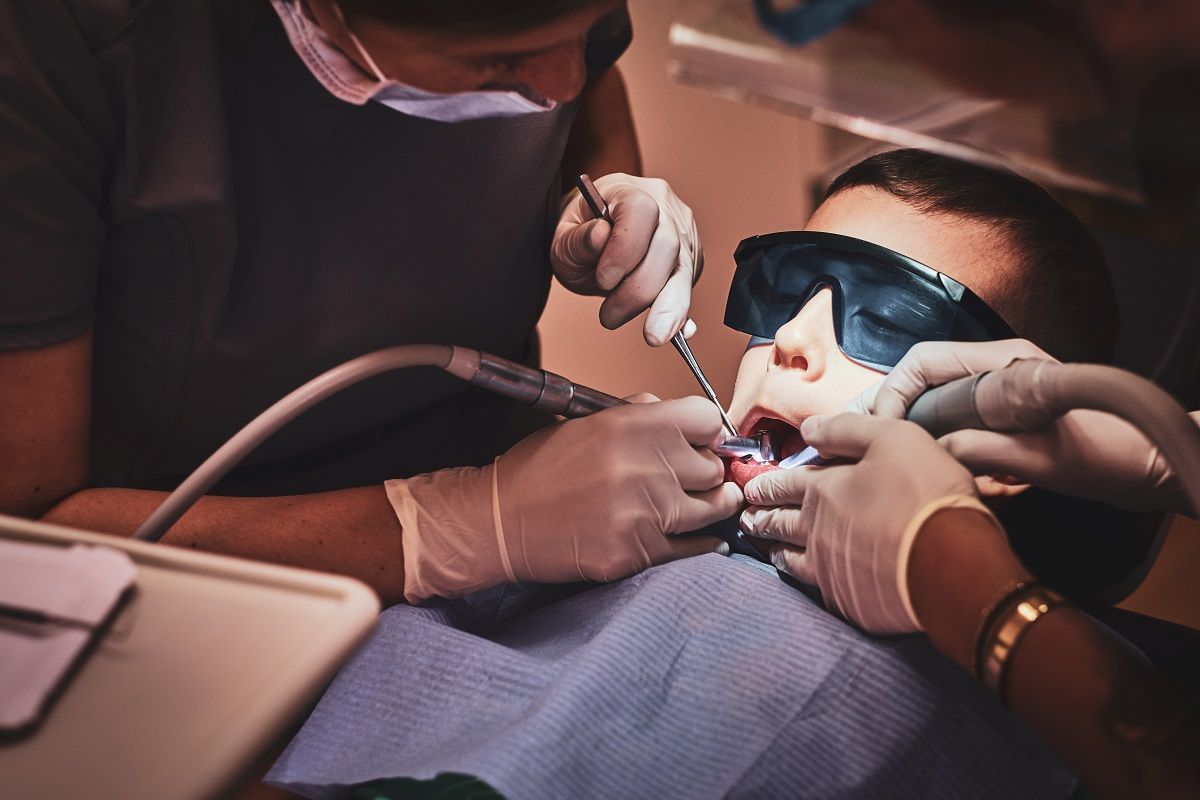
Pediatric Dental Sedation: What are the Safe Options?
Some children are incredibly fearful about dental procedures. They somehow develop a dental phobia and desist from going to the dentist. On the other hand, it’s also essential to carry on the child’s dental work and to relieve dental pain or suffering. In such cases, pediatric dental sedation is an option. Sedation helps such children to feel relaxed and comfortable throughout the procedure. It also allows them to receive dental care safely.
“Every tooth in a man’s head is more valuable than a diamond.”
-Migues De Cervantes
Now, you wonder whether these sedation methods are safe for your child. Do they stop their effect after the procedure, and how to provide post-care to the child? This article is meant to discuss these aspects and much more. Let’s get to know the pediatric dental sedation options with a particular emphasis on nitrous oxide.
Pediatric Dental Sedation: What is It and When to Consider them?
Dental sedation for kids employs medication to relieve a child’s anxiety during a dental procedure. It aims at calming the child and building his level of trust in the process. High dental caries, baby root canal procedures, or other dental work make it problematic for children and parents. Challenging child behavior is another factor that supports a need for sedation. Moreover, parental expectations for the dental procedure can improve if sedation is given to the anxious child. There are numerous benefits of dental sedation for kids; some of these are:
- It helps fight any child’s anxiety to obtain better results.
- A complex dental procedure can be done painlessly.
- You can avoid unusual reactions to a dental practice.
- It helps manage the gag reflex, a typical response during a dental process.
- Dental sedation also relieves parental anxiety due to the child’s challenging behavior.
Type of Dental Sedation for Kids
General Anesthesia
General anesthesia is a type of sedation that keeps your child sensation-free from the dental procedure. It is a controlled state of unconsciousness wherein the child is fully asleep throughout the surgical operation. Moreover, your child will not remember the process when he awakes. However, there are some special rules for food intake at home before giving general anesthesia. Some of these are:
- Do not give your child any solid food or non-clear liquids the night preceding the procedure.
- You can only provide clear liquids to your child, such as water, up to 2 hours before the process.
- If your child receives any regular medication, make sure you follow your dentist’s advice.

General anesthesia is typically suggested when the child is too young for the dental procedure or has a very high level of anxiety. Sometimes, dentists prefer to use it when the child requires dental work. Also, the dentist doesn’t want to traumatize the child during such lengthy hours. General anesthesia is usually required when the child has some respiratory problem or has special neurological needs. Such children are provided exceptional care in a hospital setting to get the best results.
Sedation with IV
Another type of sedation is intravenous medication (IV), a deep form of sedation that lets your child sleep during the procedure. IV is a fast-acting sedation, and it is administered through the child’s vein. It directly goes into the bloodstream and is a tremendous anxiety-relieving sedation for young children.
IV sedation is best for children who are healthy but need some help in terms of cooperation. Some children completely fall asleep during the procedure, while others may fall into a light sleep. Children can return to regular activity the next day after the procedure.
Oral or Conscious Sedation
Another form of pediatric sedation, i.e., oral medications, can be given to the child to carry out a comfortable dental procedure. Oral medications range from mild to moderate, depending on the child’s needs. These oral medications help relax the child and make him a little sleepy.
During oral sedation, the child is either entirely awake or wakes quickly upon sleeping. Also, the child is responsive during the procedure and can move. This option is well-suited for healthy children who have less anxiety about dental work. Usually, these oral medications can be administered by a dentist alone, and there is no need for an anesthesiologist.
Nitrous Oxide
Dental procedures can be frightening for some children to the point that they become phobic and develop a fear of the unknown. In such cases, the goal is to calm the child and give him a positive experience in a stress-free environment. One way to achieve this is by administering a form of sedation known as nitrous oxide, a colorless and odorless gas.
Nitrous Oxide is generally referred to as “laughing gas” and is quite popular throughout pediatric dentistry. It is deemed safe by the American Academy of Pediatric Dentistry for children who:
- Are highly fearful of dental procedures.
- Are uncooperative and have difficulty sitting still.
- Have a short attention span.
- Have trouble following instructions.
- Cannot avail of local anesthesia due to fear or any specific illness.
- Have special health care needs. Have difficulty following instructions.

This sedation is a mild form of sedation wherein nitrous oxide is mixed with oxygen for the child’s safety. Nitrous oxide creates a soothing effect without causing the child to sleep. When administered, it generates a calming effect and induces a state of euphoria. Either the child experiences an intense sensation, such as floating, or it elevates his mood.
Its residual effects are low and wear off quickly after the procedure. The dentist can also adjust the level of nitrous oxide as per the child’s need, which is considered a safe and popular method in pediatric dentistry.
Dental Sedation Through Nitrous Oxide: How is it Administered?
Pediatric nitrous oxide is administered simply by placing a small mask around the child’s nose. This mask carries oxygen mixed with nitrous oxide. As the child breathes in normally, the uptake occurs in the lungs. The sedation takes five minutes, and the child is instructed to keep the mask in place. Once the dentist carries out the procedure, the child will breathe pure oxygen to clear out any remaining gas. At this point, the nitrous effect is gone; however, it may cause nausea. Many dentists suggest giving your child a light meal before the dental appointment.
With the proper care and approach, nitrous oxide is considered a safe option for the child’s dental procedure. Moreover, it’s a simple and secure way to relieve the child’s anxiety in a befitting manner. Before administering nitrous oxide, it’s better to teach your child about the procedural steps and let him ask questions. Doing so will also make him confident and concerned about the procedure. You can also use the reinforcement method to encourage your child. Promise your child to give something he likes, such as his favorite toy, after the process.
Once the nitrous oxide is administered, usually, there are no lasting effects. However, giving your child soft foods for a few hours is recommended. Children can return to their normal school activity afterward, and regular dental hygiene can be resumed. However, if your child has vomiting, fever, severe bleeding, or pain, you should immediately call the dentist.
Final Thoughts
Dental sedation is an excellent way to relieve anxious or nervous children and helps make them calm throughout the procedure. If your child has an upcoming appointment and he is resisting going to the dentist, let him make aware of the forms of sedation. Your child will likely feel better and be happy to complete the procedure.
Contact your Stockton dentist for kids, Dr. Sajjad Rizvi, DDS at Happy Kids Dental, to learn about Pediatric Dental Sedation Safe Options.
Resource:
Safety and Benefits of Nitrous Oxide Sedation for Kids.
*This media/content or any other on this website does not prescribe, recommend, or prevent any treatment or procedure. Therefore, we highly recommend that you get the advice of a qualified dentist or other medical practitioners regarding your specific dental condition*
Subscribe To Our Newsletter
Get Updates And Learn From The Best


